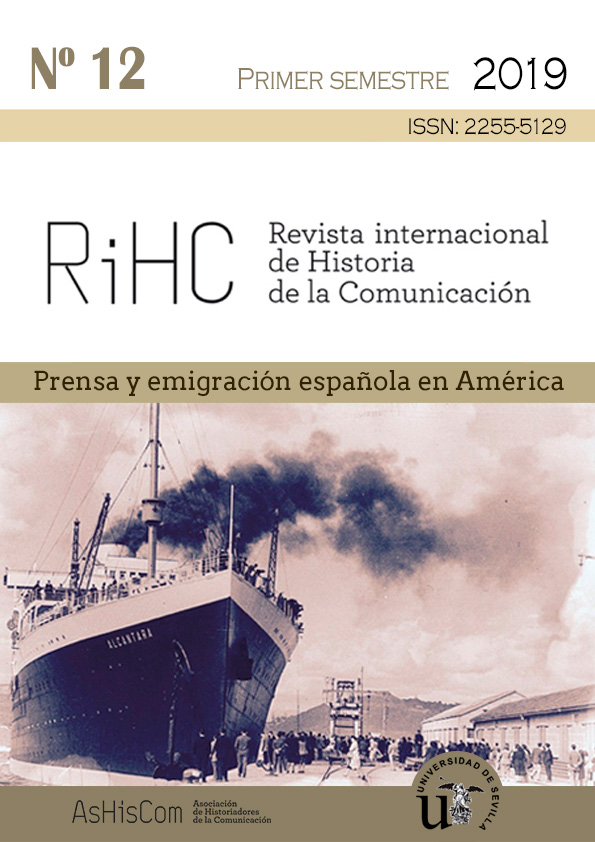La revista Ressorgiment y la colectividad catalana de Buenos Aires (1916-1946)
DOI:
https://doi.org/10.12795/RiHC.2019.i12.08Abstract
La revista Ressorgiment de Buenos Aires fue la que alcanzó la existencia más prolongada entre todas las que crearon los emigrantes y exiliados catalanes en el exterior y una de las más influyentes en los ambientes del nacionalismo catalán de América Latina hasta su cierre en 1972. En el artículo se analizan en primer lugar las características de la colectividad catalana de la ciudad hacia 1916, sobre todo en lo referido al ambiente asociativo, cultural y político, y las razones que explicarían la aparición de la revista en ese año y su rápida difusión. A continuación se avanza sobre la composición de la redacción, del elenco de colaboradores habituales -incluyendo las notas que llegaban desde Cataluña- y de los anunciantes. También se consideran las relaciones de la revista con la colectividad catalana y española de la Argentina y con los principales focos catalanistas de América, como La Habana, Montevideo y Santiago de Chile. Por último, se examina el impacto que sobre la revista tuvo el arribo de los exiliados de la posguerra civil española y, más en general, el tema del exilio en sus páginas.
Downloads
Downloads
Published
How to Cite
Issue
Section
License
RiHC. Revista internacional de Historia de la Comunicación is an open access publication, offering its content under the principle that making research available to the public free of charge contributes to the greater exchange of global knowledge.
RiHC. Revista internacional de Historia de la Comunicación adheres to the various initiatives that promote access to knowledge. All content is therefore free of charge and is published under the Creative Commons Attribution-NonCommercial-ShareAlike 4.0 International license.
By virtue of this, the authors who publish in this journal accept the following conditions:
- Open access content may be freely shared (that is, copied and redistributed in any medium or format) and adapted (remixed, transformed and built upon).
- Attribution: The user of the content must give appropriate credit, provide a link to the license, and indicate if changes were made. This may be done in any reasonable manner, but not in any way that suggests the licensor endorses the user or their use.
- Non Commercial: The content may not be used for any commercial purpose.
- Share Alike: If the content is remixed, transformed or built upon, it must be distributed under the same licence as the original.
- No additional restrictions: No legal terms or technological measures may be applied that legally restrict others from doing anything the licence permits.



